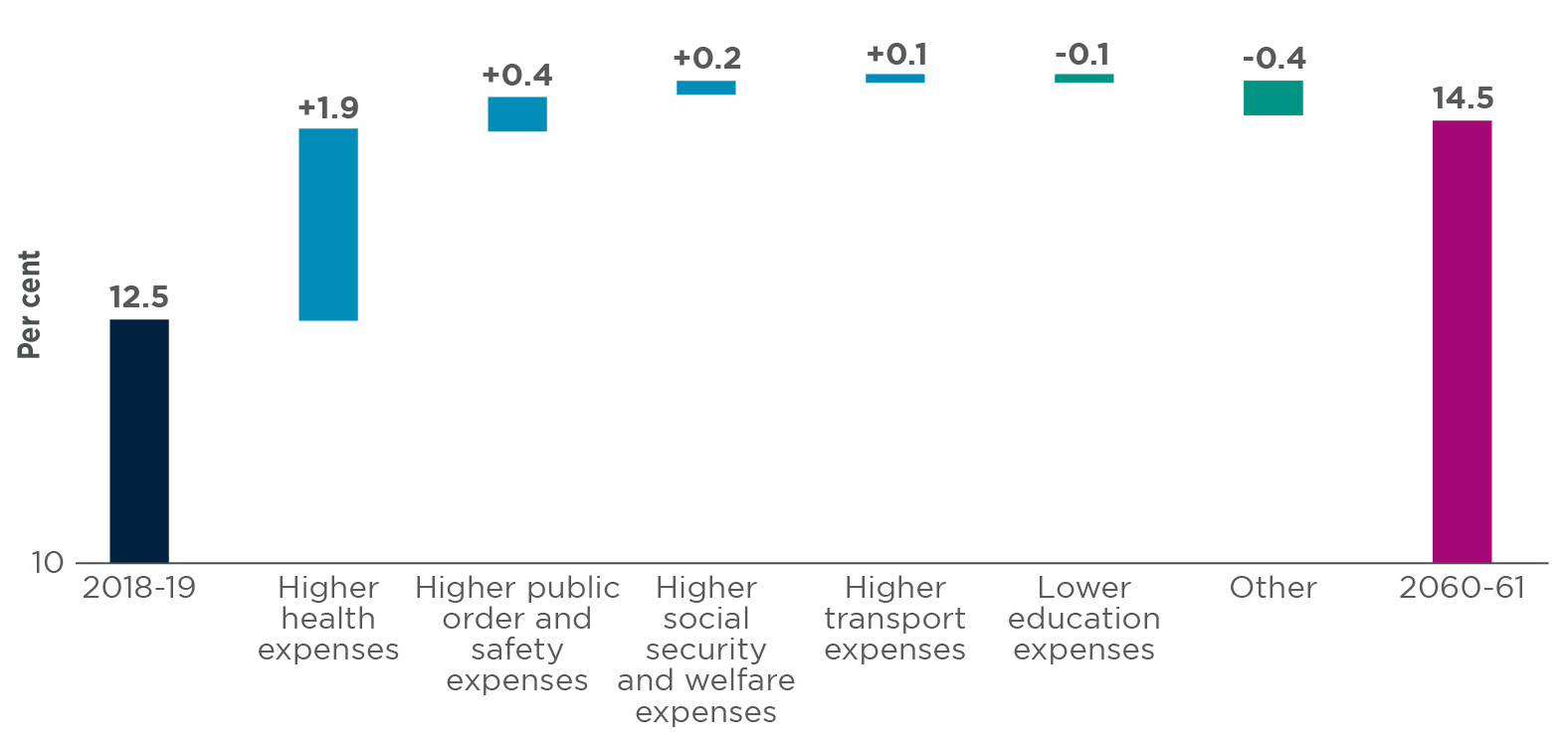NSW Government delivers and commissions services and infrastructure to make New South Wales a great place to live, work and invest.
Over the next 40 years, we project government recurrent spending on services per person to increase by 80 per cent in today’s dollars – from around $10,000 in 2018-19 to a projected $18,000 in 2060-61. Health contributes 40 per cent of this growth.
Infrastructure spend is expected to return to lower levels following a record spend of over $100 billion on infrastructure in the last decade. Infrastructure investments are expected to be 1.8 per cent of Gross State Product by 2060-61. This compares to 2.6 per cent of Gross State Product in 2018-19.
It is anticipated that external events - such as natural disasters or global crises - will continue to present challenges in the future. As these pressures grow, it will be increasingly important to prioritise government spending towards the most effective and efficient ways of delivering services.


